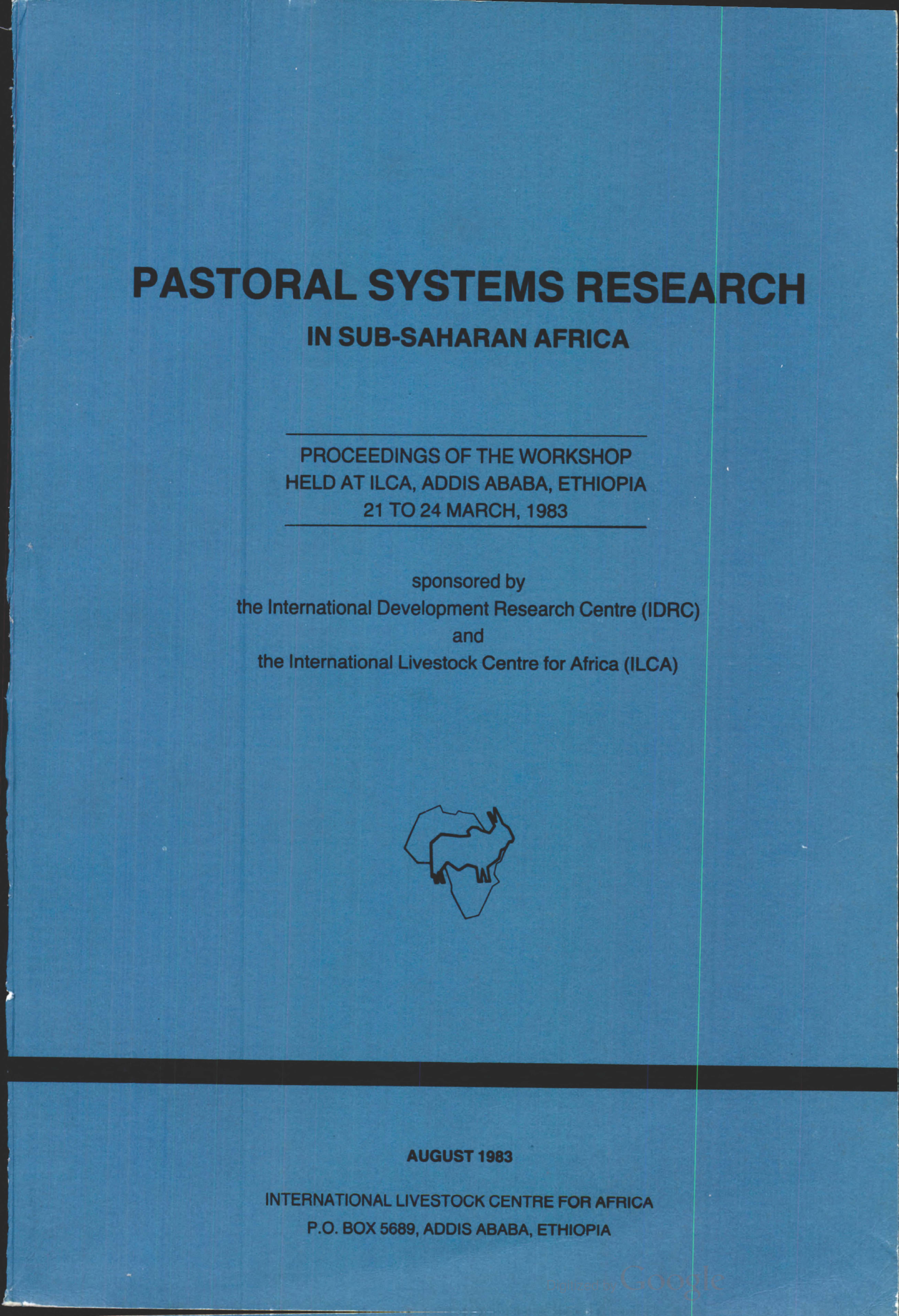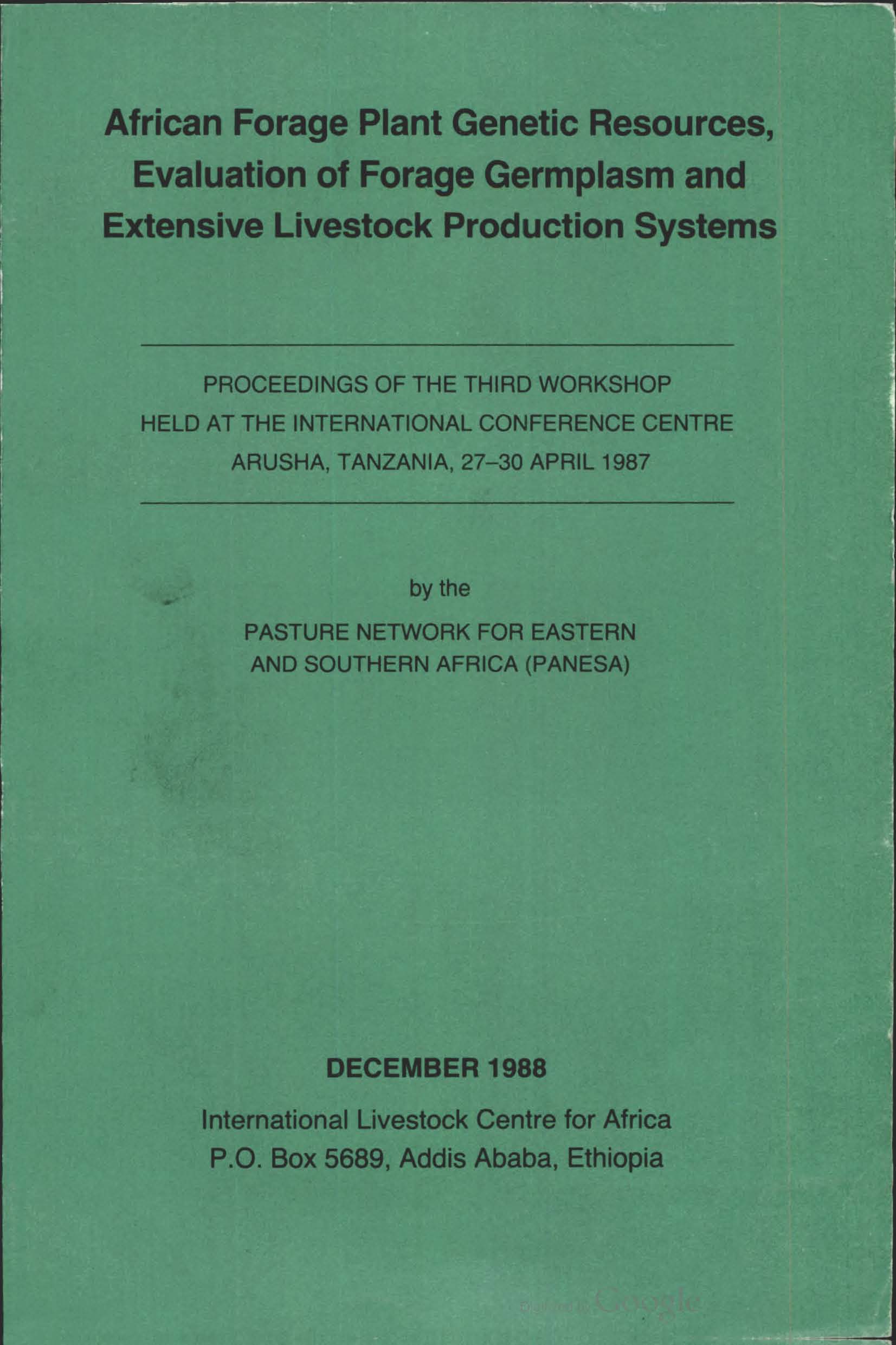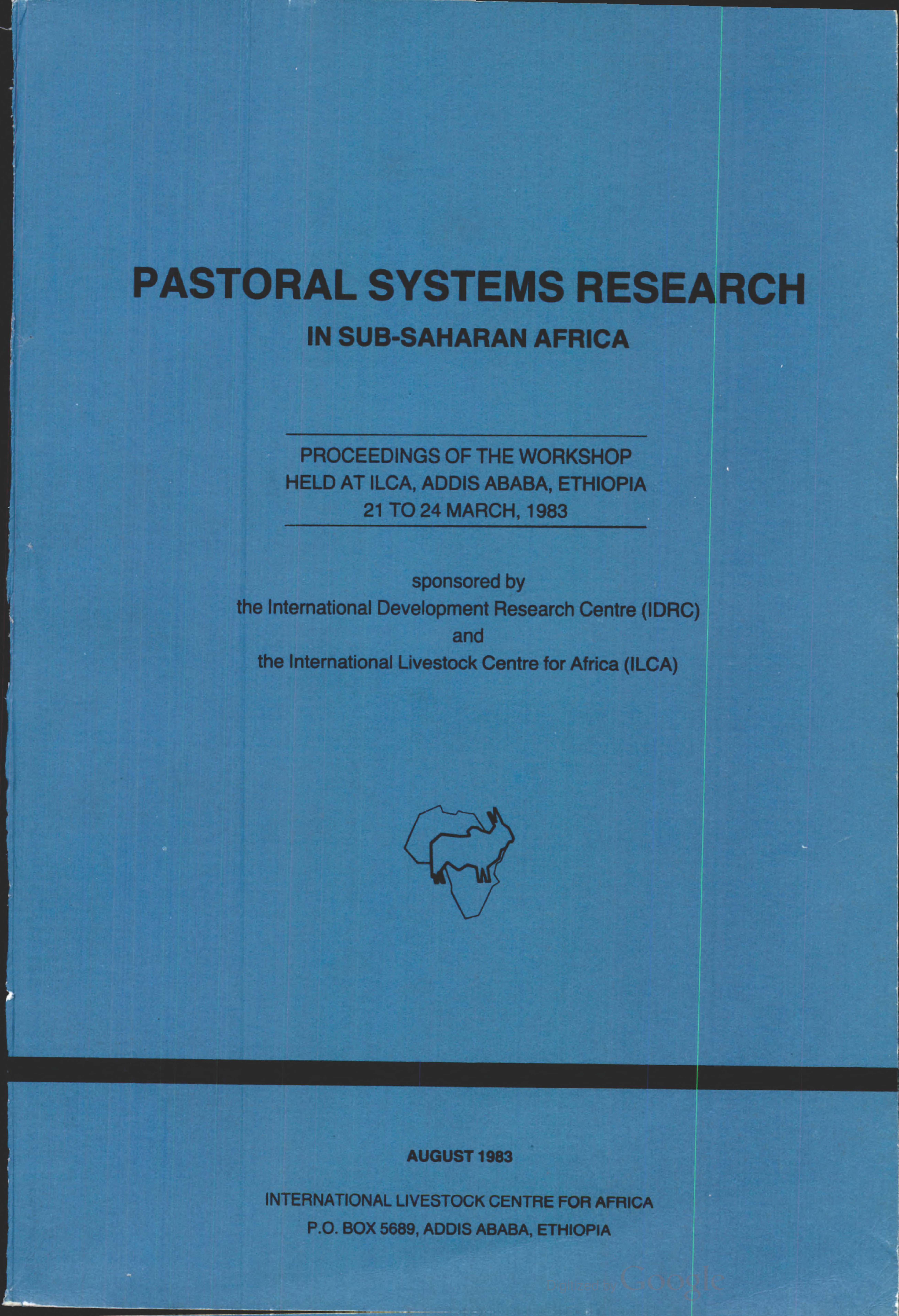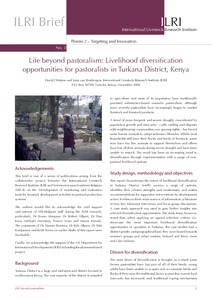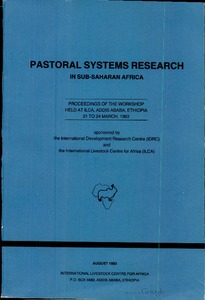Low altitude aerial surveys in pastoral systems research
Discusses how low level aerial survey can be used to diagnose constraints within pastoral systems and the relative cost effectiveness of such operations, with particular reference to flight & sample procedures and information collection and analysis; presents some results from low-altitutde aerial survey undertaken by ILCA in Nigeria, Mali, Niger and Ethiopia.

